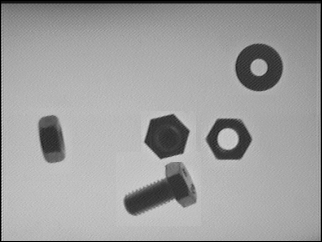In the previous chapter, we introduced you to the basic concepts of object segmentation and detection. This means isolating the objects that appear in an image for future processing and analysis.
This chapter covers how to classify each of these isolated objects. In order to allow us to classify each object, we need to train our system to be capable of learning the required parameters to decide which specific label should be assigned to the detected object (depending on the different categories taken into account during the training phase).
This chapter is going to introduce you to the basic concepts of machine learning to classify images with different labels.
We will create a basic application based on the segmentation algorithm, as discussed in Chapter 5, Automated Optical Inspection, Object Segmentation, and Detection. This segmentation algorithm extracts parts of an image, which contains objects. For each object, we will extract the different features...




